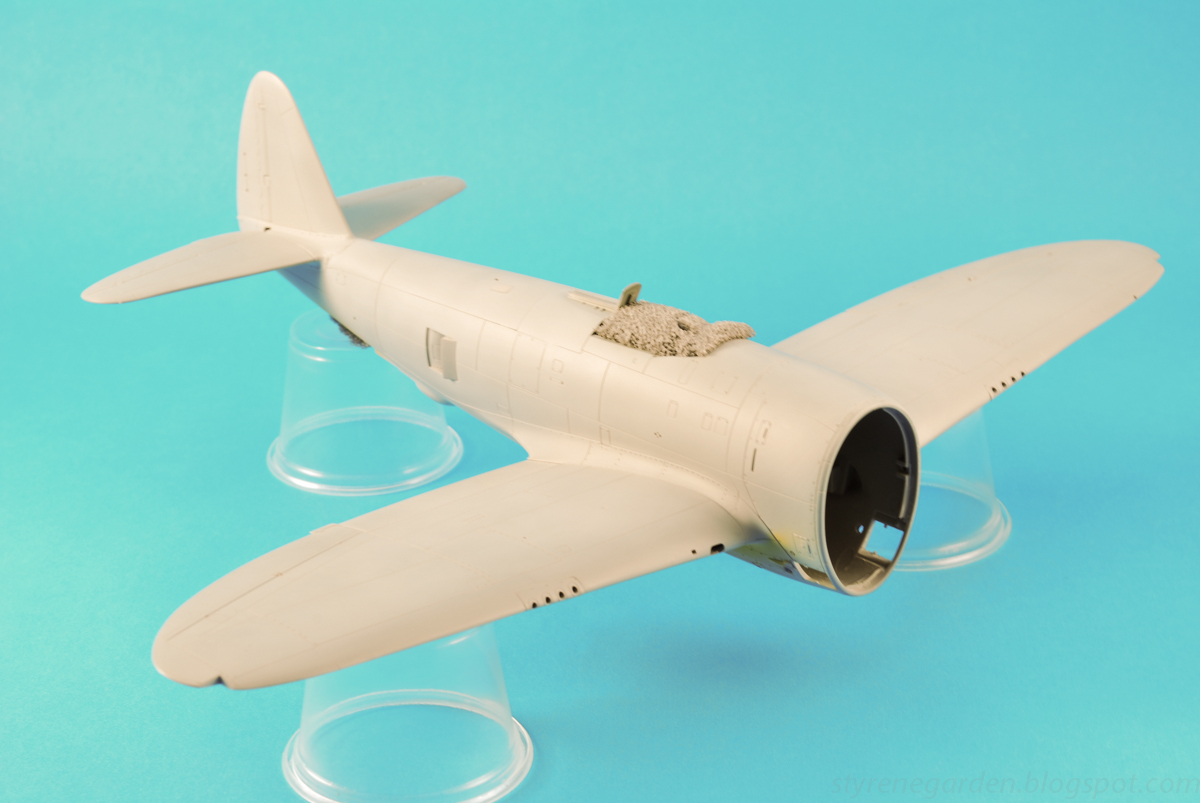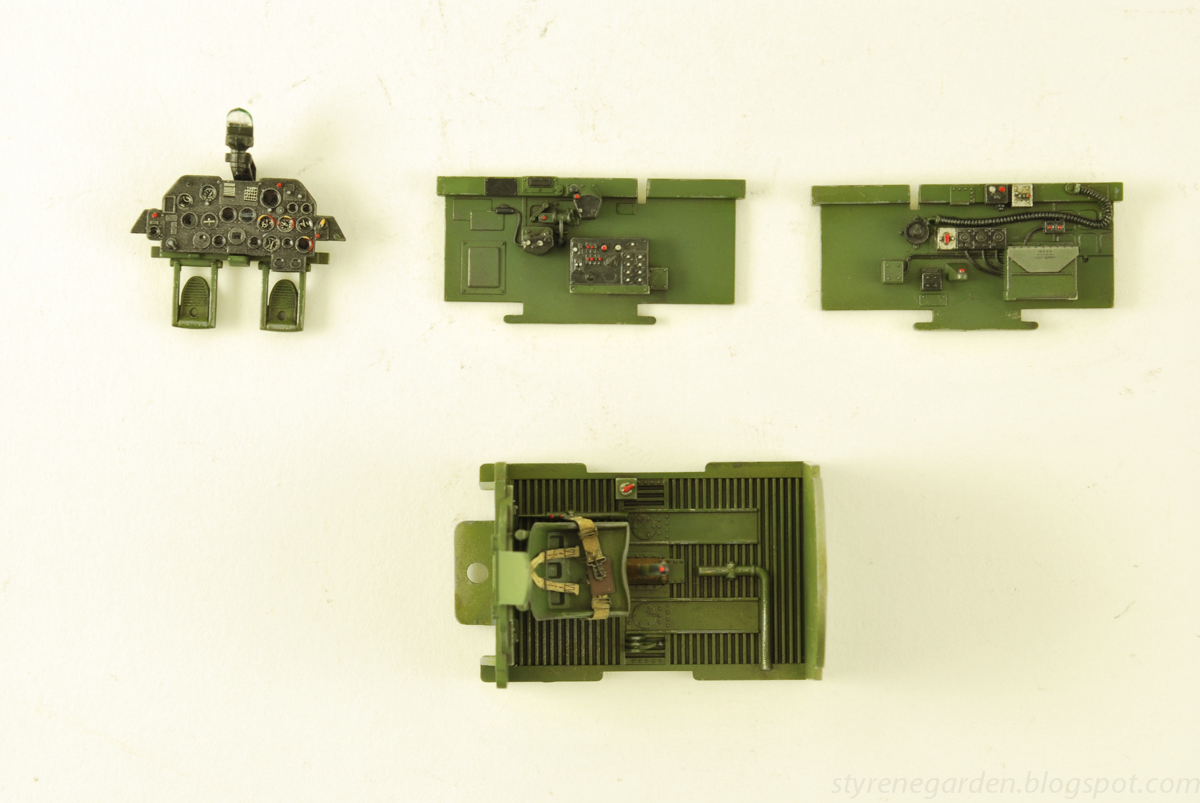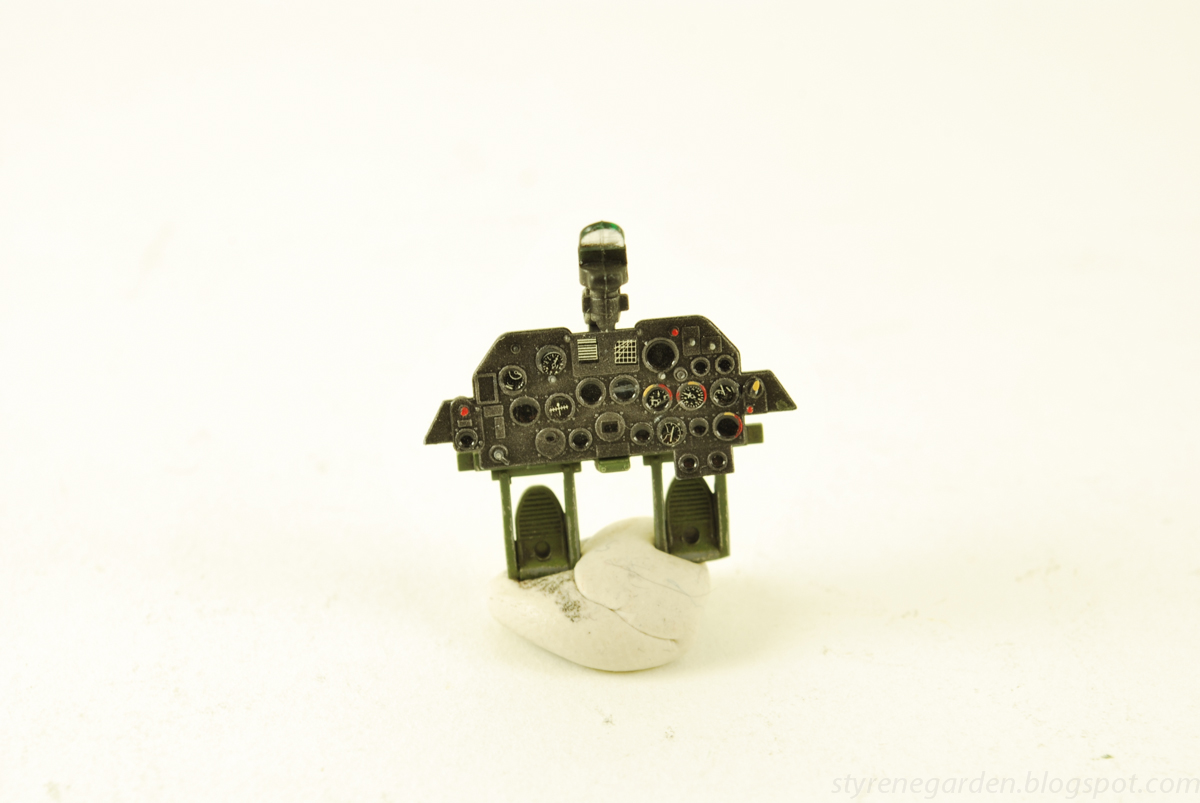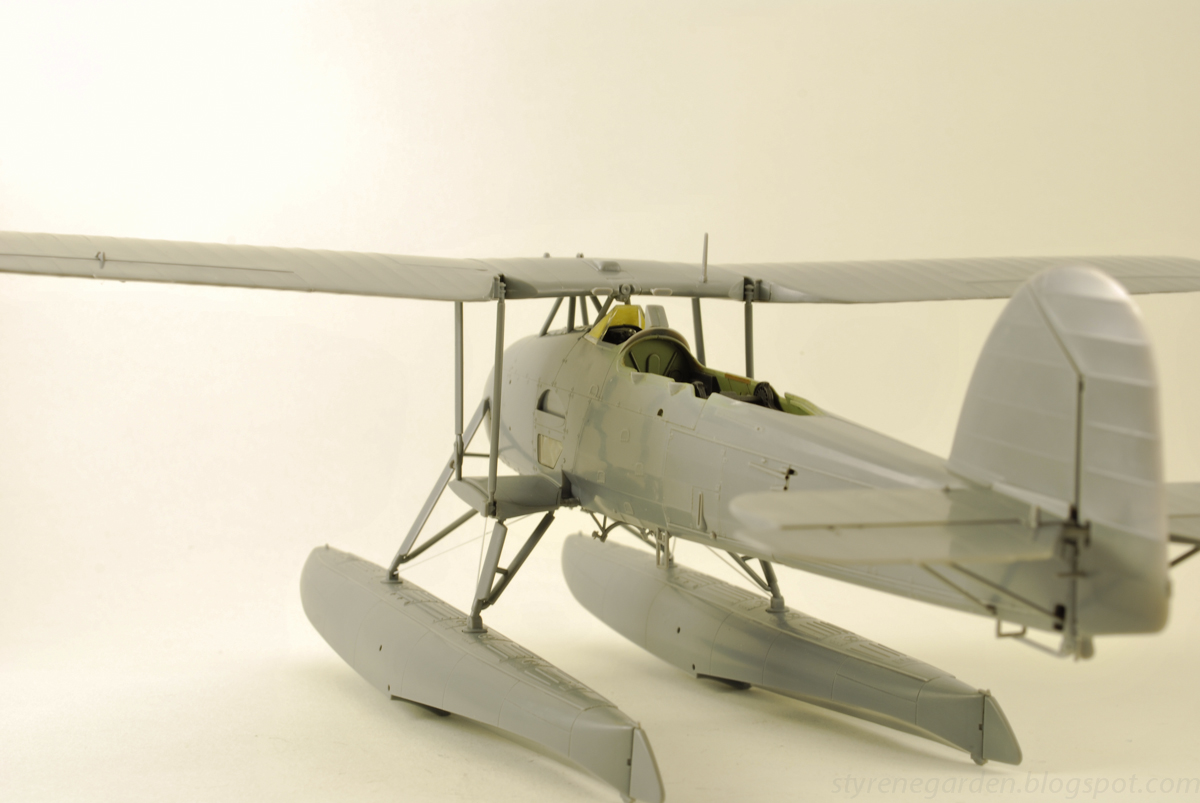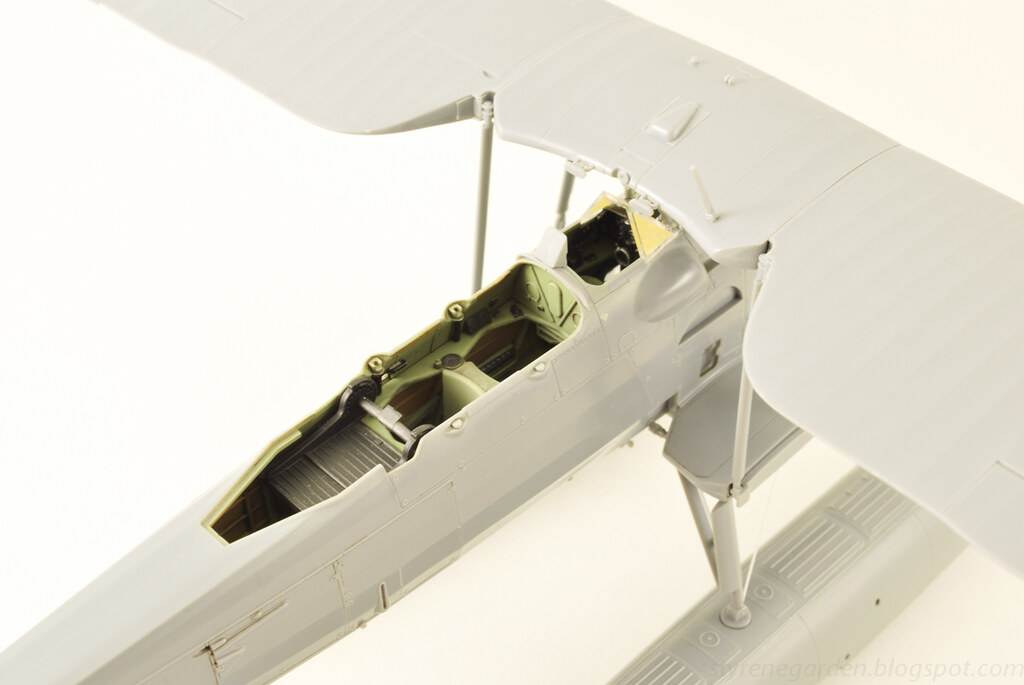As a modeler I am always looking for a cheaper better way to do something. With airbrushing having a good quality tape that leave NO residue is vital to a great job. When Tamiya released there modeling tape a decade ago, It was the best on the market. At time expensive depending on what shop you buy from. A few years ago I came across a tape called Shurtape CP60. A tape made for delicate surfaces (ie. wallpaper, Faux finishes, ...) At the time only available in my area though Sherwin Williams for a great price. Much lover than Tamiyas' offering.
I recently ran out of my CP60, drove to Sherwin Williams and found out they dont carry "Shurtape CP60". The counter rep said I may have better luck at Wal-Mart. Drove to Wal-Mart and stood in front of the paint tape section for about 5 minutes. I opened up a product in a nice hard plastic box called "FrogTape Delicate Surface Tape" It's a direct replacement for Tamiyas' Tape and a much lower price. The only downside is that it doesn't come in smaller widths than 1". At $5.50 for a roll, its a great buy and works great.
Saturday, April 26, 2014
Thunderbolt Part II
The Thunderbolt is ready for primer and paint. The major & sub assemblies are completed and airbrushed with Gunze Mr. Surfacer 1200. I cannot stress enough the value of a good, smooth & level primer base. I thin to a very high ratio of thinner (lacquer) to primer, just about the consistency to skim milk.
Spot checking with 2400/4000/12000 grit sanding sticks, all looks good for the upcoming paint layers. My attention turned to the wheel wheels, with a cote of Tamiya XK-4 yellow green. With XF-4 still in my airbrush I added some yellow to the mix for the bands on the 500 lb. bombs. After the yellow band airbrushed I cut a thin piece of FrogTape Delicate Surface tape to cover the yellow.
Then I airbrush Tamiya olive Drab with a bit of Flat green in the mix for the OD paint on the bombs.
Spot checking with 2400/4000/12000 grit sanding sticks, all looks good for the upcoming paint layers. My attention turned to the wheel wheels, with a cote of Tamiya XK-4 yellow green. With XF-4 still in my airbrush I added some yellow to the mix for the bands on the 500 lb. bombs. After the yellow band airbrushed I cut a thin piece of FrogTape Delicate Surface tape to cover the yellow.
Then I airbrush Tamiya olive Drab with a bit of Flat green in the mix for the OD paint on the bombs.
Labels:
1/48,
airplane,
FrogTape,
metalizer,
olive drab,
P-47D,
radial,
Tamiya,
tamiya tape,
tape,
Thunderbolt,
USAAF,
WWII
Sunday, April 13, 2014
Tamiya 1/48 P-47D Thunderbolt
In
May 1941, as the war raged in Europe, a single-engine fighter of more
than 4t made its first flight. This fighter was the XP-47B, prototype of
the Republic P-47 Thunderbolt of which a total of 15683 units will be
built. Thanks to war experience, this aircraft was equipped with a
2000hp radial R-2800 engine, a supercharger and eight 12,7mm
machine-guns. The XP-47B was to reach 633km/h and in January 1942, just
after the USA went to war, the production of P-47B began. It was
followed by the P-47C that incorporated various improvements and, from
April 1943, by the P-47D, the most built version. The P-47D was equipped
with an R-2800-59 engine, which can develop up to 2300hp with combat
emergency water injection system engaged. The ducts that were passing on
the sides and below the cockpit to connect the supercharger placed
behind the pilot's seat gave to this plane its massive aspect. Many
sub-types of the P-47D, designated D-1 to D-40, were produced but the
first versions were called "Razorback" because of their sharp edge
dorsal fin. The D-25 sub-type, which was introduced around June 1944,
was fitted with an electrically actuated bubble canopy in order to
improve pilot visibility and increased capacity fuel tanks. This
decision resulted in a completely remodeled plane shape. All subsequent
sub-types were also fitted with the bubble canopy and became a
characteristic feature of late production Thunderbolts. The P-47
"Bubbletop" proved to be an excellent, well-balanced fighter-bomber.
I decided to clean out my model room and I found this kit half started undernight some of my more recent projects. I first started with a cote of Modelmasters metalizer alluminum for the overcoat of intreior bronze green. I couldn't find the right color so I opted for Gunze H340 Field Green (semi-gloss). I wish more manufactures (cough...Tamiya) would produce semi-glass paint strait out of the bottle. So much easier to work with.
The only photoetch are the seatbelts stolen from annother jug project gone wrong and the side map-case cover.
Chipped with a toothpick and stiff bush the details were picked out with Vallejo paint and given a wash of various grey/brown enamel washes.
The instrument panel dial decals were punched out and a drop of future clear floor wax used to replicate the glass.
German Dampflokomotive BR86 - Hobbyboss - 1/72
I saw this little gem in a hobby shop as just had to get it. After all who doesn't like trains? Airbrushed with Vallejo paints and the real wheels were undercoated with Model Masters metalizer for the metal effect. A few bits broke off while my fingers handled it bit all in all a nice kit. I still have to assemble the track base and find some suitable vegetation and mini 1/72 rocks.
For me there was only two fit issues. The wheels need not to be glued to the chassis. The fit is quite tight. Furthermore the engineers cab is slightly angled to the rear, so that the rear hopper side doors quite don't meet.
For me there was only two fit issues. The wheels need not to be glued to the chassis. The fit is quite tight. Furthermore the engineers cab is slightly angled to the rear, so that the rear hopper side doors quite don't meet.
Fairey Swordfish Mk. I Floatplane - 1/48 Tamiya
The Fairey Swordfish was a torpedo bomber biplane designed by the Fairey Aviation Company and used by the Fleet Air Arm of the Royal Navy during the Second World War. Originating in the 1930s, the Swordfish, nicknamed "Stringbag", was an outdated design by the start of the war in 1939, but remained in front-line service until VE Day, outliving several types intended to replace it. It was initially operated primarily as a fleet attack aircraft; during its later years it was used as an anti-submarine and training craft.
The Swordfish achieved some spectacular successes, notably the sinking of one and damaging two battleships of the Regia Marina (the Italian Navy) in the Battle of Taranto and the famous crippling of the Bismarck.
The Swordfish achieved some spectacular successes, notably the sinking of one and damaging two battleships of the Regia Marina (the Italian Navy) in the Battle of Taranto and the famous crippling of the Bismarck.
The Tamiya rendering is nearly 14 years old today. I was never really into 1/48 scale aircraft, more of a 1/32 scale man myself. There are no real issues so far with this kit. Do do have to make a decision on either you want it show in wings folded or extended. I opted for the later. This is a large aircraft in real life as well as on the bench.
One thing That I wanted to do is build this kit straight out of the box. Then I remembered Tamiya sold the rigging of the wings separately. Most of it was flat wire. I choose to not buy and use flat styrene strip, a good replacement. For the fixed forward-firing .303 in (7.7 mm) Vickers machine gun in engine cowling I cut it from the mount and drilled a pin and hole for easier painting. The interior was painted per the instructions with details picked out with Vallejo paints and AK interactive washes.
The upper wings are made up of three sections with support braces attached. I oped to glue all three together for ease of painting. Still not sure if I will due a painted aluminum finish or a green/grey scheme.
The floats were assembled per the instructions plus a few bits of scrap styrene covering the holes on the side. In preparation for a water base I drilled a few holes in the bottom to attach to the base later.
Next primer and some paint.
Subscribe to:
Comments (Atom)


